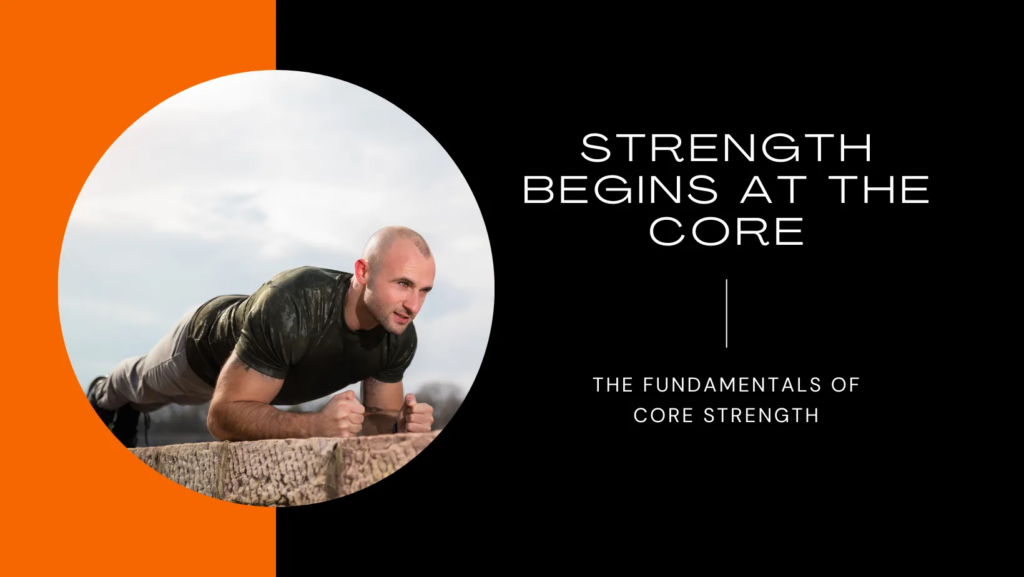The Core is the origin of all movement and It is virtually impossible to move your body (fingers and toes wiggling excluded) without having your core engage. On the lowest level of activity, simply moving your arm across your body, when you pay close attention you will feel your core tighten (even if it’s only slightly) to brace and then the movement takes place, all within milliseconds and the more force required for the movement to take place the more the core engages to support the action. It happens so quickly; you would never notice the order and assume it all happens at once. The core is also essential to maintaining correct muscle balance throughout the human movement system. A strong core will not only help you move well through your day-to-day activities but when trained correctly, will increase performance by keeping tension held even under the vigorous stresses of dynamic activity. This is crucial when lifting heavy loads, changing direction quickly, accelerating and decelerating during sports like Rugby, Football, Tennis or Golf during a powerful drive down the fairway. For many people, the route of low back pain can often be traced back to an imbalance within one of these systems. For example, when the pelvis develops an anterior tilt this can cause many low back issues, the cause of this could be due to underactivity of the glutes, abs, hamstrings or overactivity of the hip flexors and quads normally a combination but either way once diagnosed can be effectively corrected.
The core musculature can be divided up into 3 sections, each section consists of a group of muscles and each group works together (due to their synergistic nature I will refer to each section as a system from here on). When these systems are trained efficiently, they combine to produce tension within the midline, allowing strength and power to be expressed to their greatest potential. These systems are-
The Local Stabilisation System
This comprises primarily of type 1 muscle fibres that attach directly to the vertebrae, providing stability to limit excessive compressive, shear and rotational forces and posture control. The best way to imagine these muscles are the ones that support vertebra to vertebra. The muscles that primarily make up this system are the Multifidus, Transverse Abdominus, Diaphragm Internal Obliques and Pelvic Floor. An effective way to begin training this system would be an RKC plank and prone back extensions. This system should always be strengthened first but often gets overlooked for the more known “abs” exercises.
The Global Stabilisation System
This is made up of the muscles that attach the pelvis to the spine and act to transfer load between the upper and lower extremities providing stabilisation to the pelvis and spine and eccentric control during activity. These muscles are the quadratus lumborum, psoas major, external obliques, portions of the internal oblique, rectus abdominis, gluteus Medius, and adductor complex. This is the system that commonly gets all the attention as crunches work to develop the abs and glute bridges for the hip stability
The Movement System
This system consists of muscles that attach the spine and/or pelvis to the other extremities and are primarily responsible for concentric force production and eccentric deceleration during dynamic movement. The muscles involved in this system are latissimus dorsi, hip flexors, hamstring complex, and quadriceps. Unquestionably a sure-fire way to target these would be squats and deadlifts
The Sum Of All Things
Collectively these 3 systems provide force both concentrically and eccentrically as well as support to the lumbo-pelvic-hip complex (LPHC). Please note that just focusing on one of these systems will not provide optimal support to the hip complex and will inevitably create muscle imbalances and inefficient movement patterns, leading to inhibited performance and potential injury. It is only through their synergistic nature that they enhance stability and neuromuscular control of the LPHC.
To Conclude
For many people, the route of low back pain can often be traced back to an imbalance within one of these 3 systems. For example, when the pelvis develops an anterior tilt, this can trigger many low back issues and the cause of this could be due to under activity of the glutes, abs, and hamstrings or overactivity of the hip flexors and quads normally a combination. Either way, once diagnosed can be effectively corrected with strengthening exercises and stretches to restore balance. The core is the origin of all movement and can be split down into 3 systems, local, global and movement system and should be strengthened in that order. Focussing only on 1 of these systems will lead to muscle imbalances and eventually injury, so it is important to make sure, each is given the time necessary to develop before moving into the next system to work synergistically to provide support to the LPHC.

